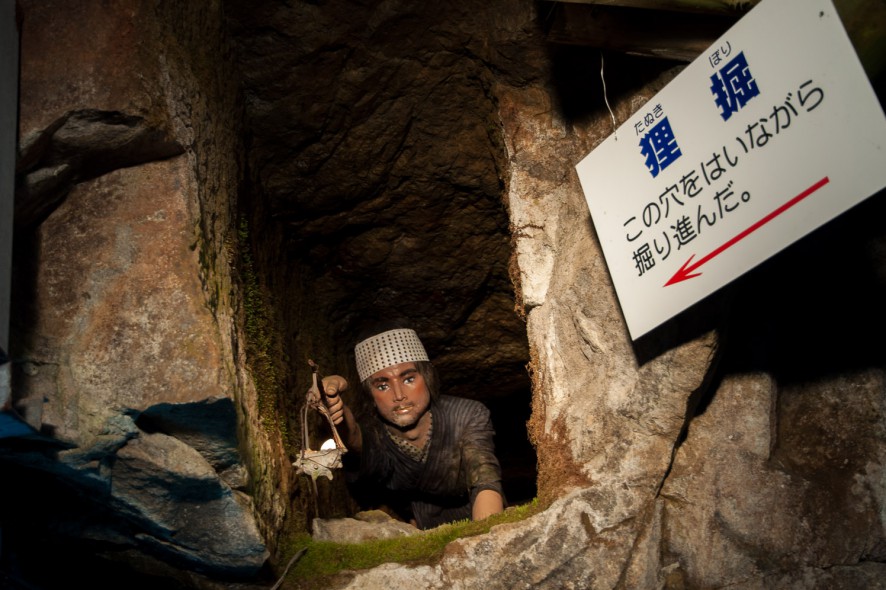Working in the Mines …

The Stream of History

In the Hyogo Prefecture hidden in the mountains there is the old Ikuno mine, which was discovered as early as 807 AD. However, it was the discovery of silver in 1542, in the midst of the warring states period (Sengoku Jidai) that launched full scale exploitation of the mine and over the years miners and labourers hand mined mainly for silver, copper, gold, lead and coal but also some 70 other minerals. During the late Muromachi and Edo periods the mine was controlled by the ruling feudal lords, first Oda, then Toyotomi and finally for years (hundreds of years) the Tokugawa with obvious economic and military benefits (for both the area and the ruling clan).
The mine of Ikuno came under the direct control of the government in 1868, that means already in the first year of the new Meiji period. As this period was also marked by the explicit opening of Japan to the outside and hand in hand an embrace of Western technologies the French mining engineer Jean-François Coignet was appointed to modernize and mechanize the mine by introducing (then) advanced European technologies. Remarkable improvements were achieved amongst others by establishing new tracks and using more advanced capstans. Coignet lived in Japan for eight years and is now credited for having accomplished pioneering work in confusing times when the collaboration between Europeans and Japanese was still more the exception than the rule.

In 1896 the mine was privatised and became part of the Mitsubishi empire. However, after over thousand years of mining work there the mine had to seize operations in the 1970ies for lack of profitability due to exhaustion and deterioration of the mineral ores. In the end the total length of the tunnels under the mine amounted to 350 kilometers and one of the tunnels was 880 meters deep. Today it is a mining museum and a small section of the tunnel is open to the public. It serves as a cultural heritage site. May be it is even more of interests as in comparison to other countries Japan has a relatively minor history of mining, in particular since mining resources (that means raw materials) are not on abundant offer in the country of Japan with many mining activities having ceased after the 1970ies. How ever one chooses to look at it, it remains a stunning impression to imagine 1000 years (or even “only” 500 years of mining history, including the major changes in society) all happening in this one place, which indeed does not look like an industrial wasteland.




There is also a mineral museum adjacent to the mine, and somehow when looking at all those minerals displayed in part with their history and provenance, with taking the minerals found in Japan as a starting point and comparing them to findings on the world wide scale, the ideas of minerals became a somewhat international endeavour.
On an informative note: The museum houses the Mitsubishi mineral collection. The focus of this collection are the mineral specimens collected during the Meiji period from sources throughout Japan by Dr. Tsunashiro Wada, a pioneer in the field of mineralogy. These, in addition to other ore samples from other mines throughout Japan amount to approximately 4500 mineral specimens. There are usually about 1200 items on display in this museum – the largest of its kind in Japan.
(source: leaflet/ internet)
Further Reading:
- Ikuno on Wikipedia
- Information on Ikuno Mine on the website of Asago City (with historical images)




